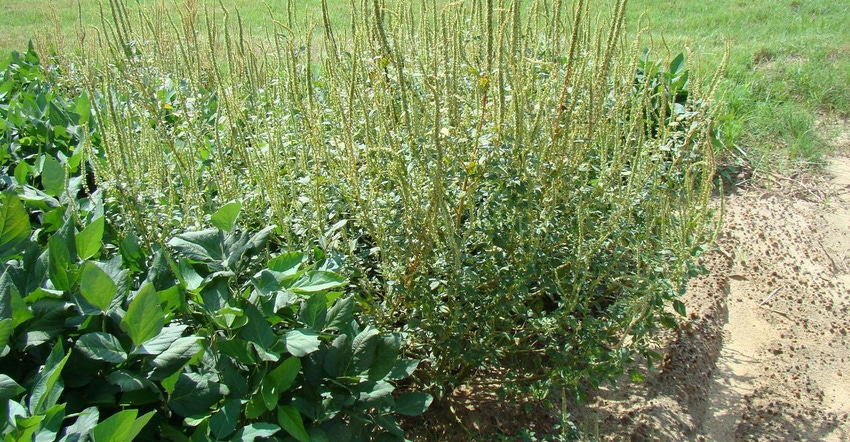April 13, 2020

With the warm temperatures across much of Pennsylvania and Maryland, folks are starting to burn down some fields getting ready to plant field crops.
It’s a good time to remember that environmental conditions, and the size of the weeds or cover crops can greatly affect the activity of burndown herbicides and weed control.
Here are some tips to consider when applying burndown herbicides for weed control:
Monitor daytime temperatures. Do not apply either glyphosate or Gramoxone unless daytime temperatures exceed 55-60 degrees F. Liberty can be used for burndown, but it is much better to use in-crop and on LibertyLink varieties when the temperatures are warmer. Plus, it is one of the few herbicides that is effective on marestail and Palmer amaranth postemergence.
Sunny weather is important for Gramoxone, as sunlight causes greater plant activity.
Beware cold conditions. Cold nights (when the temps drop below 40 degrees) will reduce activity, particularly glyphosate. Herbicides work slower under cool conditions.
2,4-D is generally more active than glyphosate in cool weather; thus, tank mix them when possible.
Wait for the warmup. After a cold spell, wait for a few days of warm, sunny weather before applying herbicides.
In general, burndown herbicides provide the best control when annual weeds are actively growing, are 6 inches tall or less, and are still in the vegetative stage of growth.
Know when to spray. Spraying in late afternoon is not as effective as mid-morning. And remember to scout fields prior to planting and spraying to ensure you use the correct herbicide program for the problem.
Winter annuals that are flowering may require higher rates or different combinations of products.
Consider burndown herbicide rate. Increasing the rate of the burndown herbicide may be necessary if weeds are stressed by cold conditions or are larger in size.
Perennials should be at least 6 to 8 inches tall when a systemic herbicide is applied.
Tank-mix herbicides. With the spread of glyphosate-resistant marestail, it is necessary to tank-mix herbicides to increase the spectrum of activity for successful control, plus use multiple modes of action.
Tank mixing a triazine such as atrazine with Gramoxone increases the activity. Tank mixing any other herbicide, especially a clay-based herbicide, reduces glyphosate activity. You can overcome the antagonism by increasing the glyphosate rate by 20% to 25%.
Additional chemicals. Be sure to include ammonium sulfate (AMS) at 8.5 to 17 pounds per 100 gallons or equivalent with glyphosate and add a good-quality nonionic surfactant (NIS) at a 0.25% volume per volume to Gramoxone. If the glyphosate doesn’t come fully loaded, add good-quality NIS as well.
Nitrogen solutions (UAN) may be used as the carrier with either herbicide. UAN can increase Gramoxone activity and reduce glyphosate activity (especially for perennials and difficult-to-control weeds). Adding AMS also reduces the antagonism.
Burndown herbicide combo. Another good burndown combination that does not contain glyphosate is Gramoxone plus atrazine (or metribuzin) plus 2,4-D LVE plus NIS/MSO plus AMS. This is a viable option to control marestail if it is smaller than 4 inches tall.
Gramoxone advice. Use flat fan tips with both glyphosate and Gramaxone and apply Gramoxone at a minimum of 20 gallons per acre. Tip selection is less important with glyphosate than Gramoxone.
Tips for orchardgrass burndown
Here are three tips to help make the most of burndown herbicide used on orchardgrass.
Right height. Wait until orchardgrass is 6 to 10 inches tall and actively growing.
Right amount. Use at least 1.13 pounds ae (acid equivalent) per acre or higher glyphosate. In some cases, up to 3 quarts per acre of glyphosate may be necessary to provide effective control, especially if tank-mixing with atrazine or other clay-based herbicides due to antagonism.
Preplant products. Many preresidual herbicides can be included in the spray mixture, too. Products listed as “preplant” can be applied at this point. Prowl or pendimethalin products should not be applied if corn has not yet been planted
Source: Penn State Cooperative Extension, which is solely responsible for the information provided and is wholly owned by the source. Informa Business Media and all its subsidiaries are not responsible for any of the content contained in this information asset.
You May Also Like




